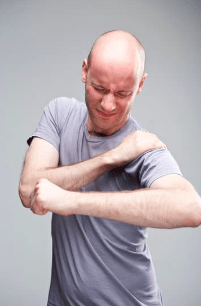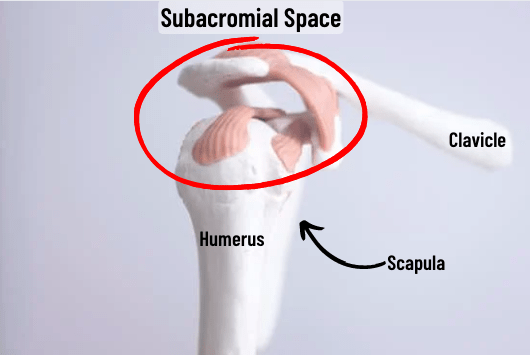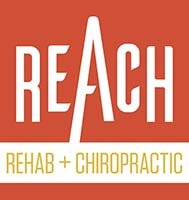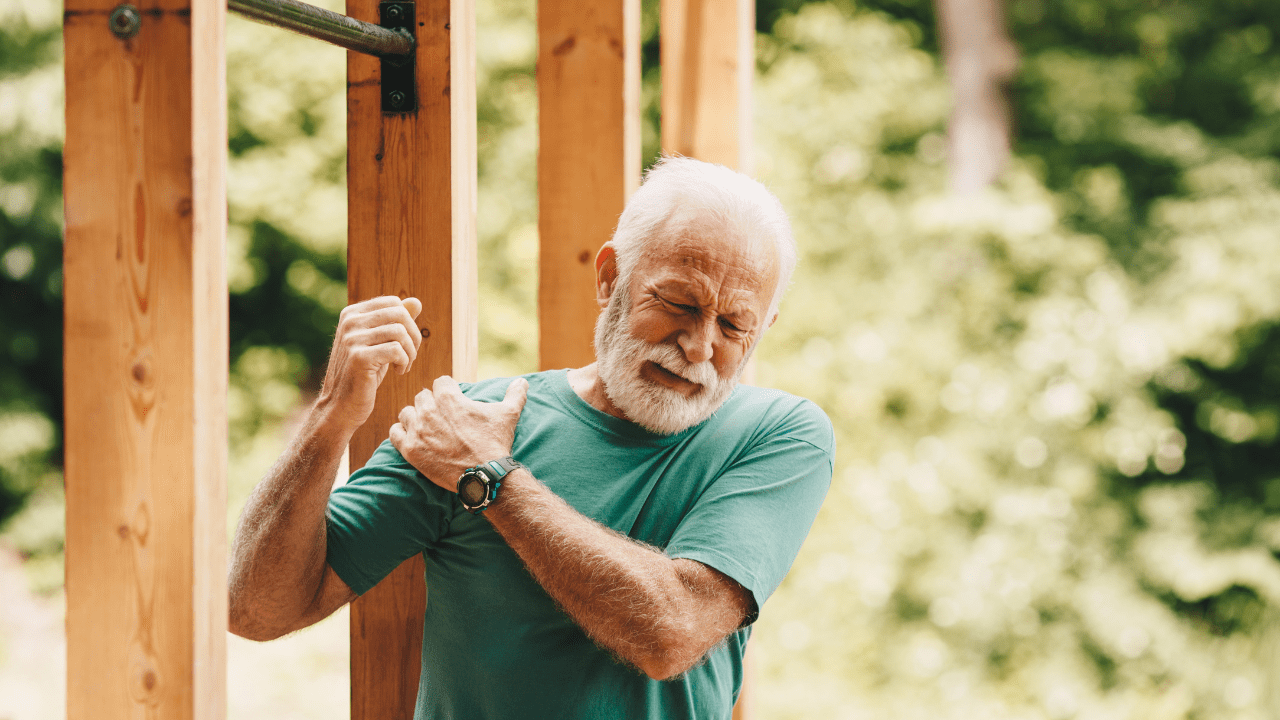What is Shoulder Impingement?
Shoulder Impingement (or Swimmer’s Shoulder) is one of the most common causes of shoulder pain. It occurs when the subacromial space above the shoulder joint becomes more narrow. This can cause irritation to the surrounding muscles and tendons.
The shoulder is a complex joint. It is a ball-in-socket articulation, so the problem may be coming from the head of the humerus (ball), glenoid (socket), scapula (shoulder blade), or a combination of each.
Shoulder Impingement can be related to arthritis, joint damage, and chronic muscle tightness and weakness. There are TWO main causes of shoulder impingement, and knowing which one you have can help with your recovery process:
1. Structural Shoulder Impingement — Structural changes to the shoulder joint
-
- Arthritis
- Trauma/Injuries (Ex. an accident or a fall)
- Congenital (how the joint developed)
2. Functional Shoulder Impingement — muscle and joint imbalance
-
- Muscle overactivation and/or underactivation
- Poor understanding of how to “pack” the shoulder in an ideal position
- Upper back and neck posture

Most cases of shoulder impingement that seem to come out of nowhere are typically functional shoulder impingements that can be corrected with a specific rehab strategy.
Experiencing pain or pinching in your shoulder? Schedule an appointment with your Plymouth Shoulder Pain Experts today!
What causes Shoulder Impingement?
Shoulder Impingement most commonly causes pain or pinching in the front side of the shoulder near the AC joint. The pinching sensation is caused by the poor articulation of the shoulder joint, meaning the ball is not balanced while moving within the socket.
Poor articulation is often due to an imbalance or dis-coordination of the muscles that control the shoulder joint and shoulder blade. Often, the head of the humerus (ball) is shifted more anterior (forward) within the glenoid (socket), resulting in pinching and pain.
Another common cause of Shoulder Impingement is poor shoulder blade positioning and movement. If you have poor scapular (shoulder blade) movement, particularly upward rotation, this can lead to less space in the socket for the ball to move. If this problem persists, it can lead to premature structural changes like a labral tear, bone spurs, or early onset of arthritis.
How do I know if I have Shoulder Impingement?
There are many causes of hip and groin pain. So, how do you determine if Shoulder Impingement is the cause of your pain?
Common physical symptoms of Shoulder Impingement:
- Pain in the front (anterior) or top (superior) of the shoulder
- Pinpoint tenderness around the Subacromial Space
- Pain and/or pinching when bringing arm outwards or overhead
- Pain and or tension around the rotator cuff and pectoral (pecs) muscles
- Shoulder pain while exercising, i.e., shoulder hurts after bench pressing.
- A noticeable difference in the shoulder range of motion compared to the other side

If my shoulder pinches, is it Shoulder Impingement?
Though you may be experiencing one or more common physical symptoms, it doesn’t necessarily mean the cause of your Shoulder Impingement is the shoulder joint issue.
Weird, right?! Bear with us here.
Just like a leaky roof can cause damage to your ceiling, we often find a “leaky” neck or upper back (between the shoulder blades) can cause pain in the shoulder, even without neck and upper back pain. Just like you would want to fix the leaky roof and the ceiling damage, you want to address both the neck and the shoulder.
Are you dealing with shoulder pain?
Our Sports Chiropractors are ready to help!
What can I do about Hip Impingement?
Many conservative treatments can be used for Shoulder Impingement to avoid surgery. With all mechanical (movement) pain, there’s a ‘what’ and a ‘why’ — what the problem is and why it’s occurring in the first place.
To achieve resolution, it’s crucial to not only identify and correct the problem but address the behaviors which lead to its cause in the first place.
Here are some self-help tips:
- Identify what activities worsen your symptoms.
- Take mental notes of your actions when your pain feels better or worse to identify any behavioral patterns.
- Scale back your activities (only for a few weeks).
- Modify any activities that cause your symptoms. For instance, if your pain starts after shoulder pressing for ten reps, only press 4-6 reps. Scale this activity back for a week, then see if you’re ready to scale back up, i.e., ten reps the following week.
- Loosen tight tissues
- Overuse of the anterior shoulder muscles (Pectoralis Muscles) commonly causes tightness in the front of the shoulder. Loosen up the pec muscles before doing activities that cause you pain.
- Below is a video on how to properly release your pectoralis muscles.
- Start a stretch routine
- If you’re experiencing pain daily, then use that pain as motivation to start a daily stretching routine!
- Here is an easy Beginner Stretch Routine.
- Or try the advanced routine if you’re up to it!
Find Shoulder Pain Relief At REACH Rehab + Chiropractic
It is essential to be properly educated on positions to avoid that may increase pain while performing stretches and strengthening exercises for the shoulder joint. If completing these techniques (above) does not improve your pain, you may need to be assessed by a Southeast Michigan Chiropractor to find the core problem to personalize your treatment plan.
Are you searching for a qualified sports chiropractor in Plymouth, MI, for your shoulder pain? REACH Rehab + Chiropractic is one of the leading names for shoulder pain treatment in the area. We provide personalized assessments and treatment to help you regain your full range of motion quickly.
Next time you are searching for “shoulder pain treatment near me” in Canton, Ann Arbor, or another local community, think of REACH Rehab + Chiropractic. We treat acute and chronic shoulder pain. Book an appointment or contact us today at (734) 530-9134 for effective shoulder pain relief.


